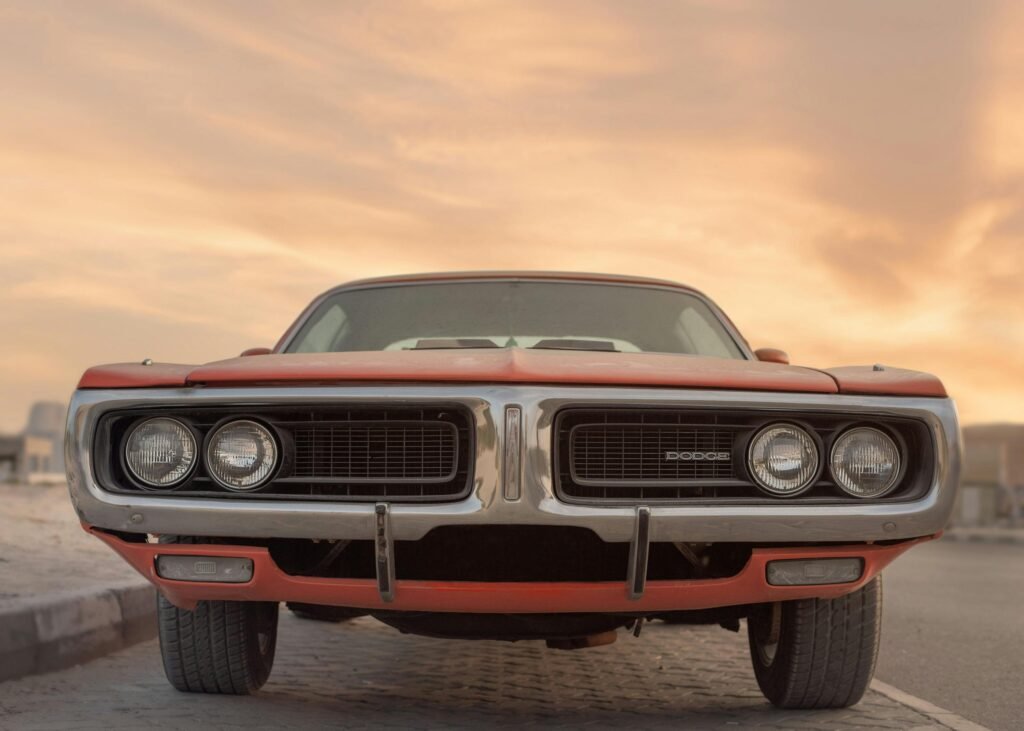Keep It Clean – Inside and Out

A clean car isn’t just about aesthetics; it’s about maintenance. Dirt and grime, if left on the paint, can trap moisture, leading to rust. Give your vintage car a regular wash to keep it looking its best, and don’t forget the undercarriage where salt and dirt can build up.
Wax to Protect That Shine
Waxing doesn’t just make your car look shiny; it forms a protective layer against the elements. A good coat of wax every few months will keep your vintage paint protected from UV rays, rain, and pollution, preserving that classic charm.
Check Your Tire Pressure Regularly
Vintage cars often have a unique set of tires that can be hard to replace. Keeping the tires at the correct pressure reduces uneven wear and improves fuel efficiency. Check your tire pressure monthly, and remember that cold weather can cause tires to deflate slightly.
Use Leather Conditioner on Seats

Vintage cars often have leather seats that can crack over time. Regularly apply a leather conditioner to keep them soft and prevent cracking. It’s a simple way to make the interior look as good as the exterior without needing a full reupholster.
Keep the Battery Terminals Clean
Dirty battery terminals can cause your car to have a hard time starting or even prevent it from starting altogether. Use a mixture of baking soda and water on a toothbrush to clean off any corrosion. A quick clean-up here can save you a ton of headaches down the road.
Drive It Regularly
This might seem like a strange maintenance tip, but driving your vintage car often keeps everything lubricated and running smoothly. Letting it sit for too long can lead to issues like fuel separation in the gas tank and rusting in the engine components.
Watch the Oil
Older engines need oil more frequently than newer models. Check the oil level regularly and stick to a good-quality oil that’s appropriate for your car’s engine type. It’s a small task that can help keep the engine running without issues.
Inspect Belts and Hoses
Belts and hoses in a vintage car can degrade over time, leading to breakdowns that might be hard to fix on the road. Give them a quick inspection every so often, checking for any signs of cracking, fraying, or looseness. Replacing a worn belt or hose can prevent bigger problems later.
Keep an Eye on Coolant Levels
Vintage cars can easily overheat, especially in warmer weather, and low coolant levels are a common culprit. Check your coolant level every few weeks, and top it up with a 50/50 mix of antifreeze and water if it’s running low. This simple check can save your engine from a meltdown.
Don’t Forget to Grease

Many vintage cars have grease points that need regular attention. Grab a grease gun and make sure the joints and bearings stay lubricated to prevent wear and tear. This is one of those little steps that can make a big difference in extending the life of your car.
Check the Spark Plugs
Spark plugs in older cars may need replacing more frequently than in newer vehicles. Take a look every six months or so to make sure they’re not too worn or dirty. Swapping them out is inexpensive and can keep your car running smoothly without misfiring.
Replace Your Air Filter
A clogged air filter can impact your car’s fuel efficiency and overall performance. It’s a quick and easy swap that doesn’t require a mechanic. Simply locate the air filter, pop in a new one, and help your engine “breathe” a little better.
